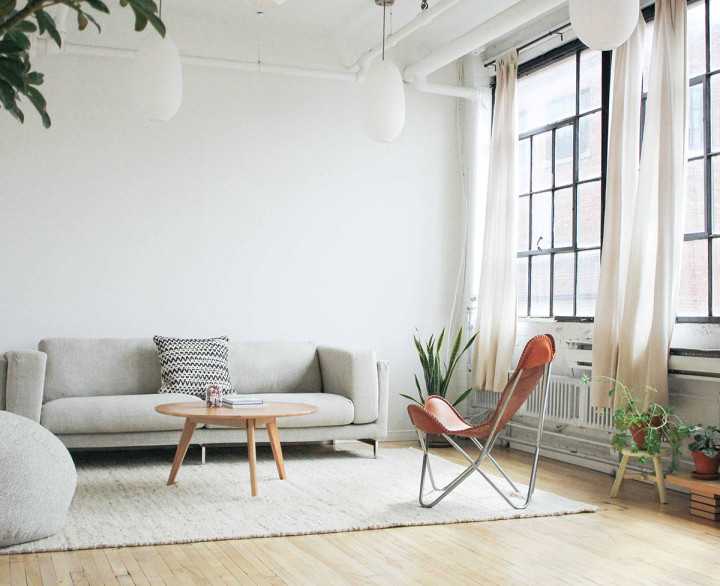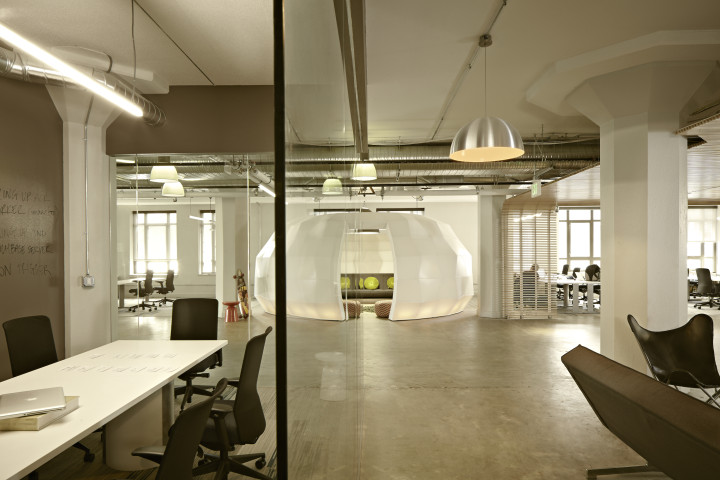The issues we encounter in today’s workplaces aren’t new problems for which we need new solutions. Here, Dr. Charlie Grantham, a workplace expert and Reiki master, explains how to apply the Zen principles of simplicity, enclosure, and completeness to your next workplace project.

This article is my interpretation of how the spiritual tradition known as Zen applies to designing workplaces. Others have written about it, and they will again. Never mind, because there is no beginning and no end in Zen.
Zen has a long history and many interpretations. It is, at the base, a uniting of mind and body focused on knowledge gained through meditation and work with masters. It is a process of knowing, not a thing. Huston Smith, a Zen master, said that Zen is the “infinite respect for all thing past; infinite service to all things present; infinite responsibility for all things future.” Design, then, is “frozen” Zen, something to support occupants and users in this ever-expanding process. Zen also emphasizes service to others, calling to mind the goals of those who strive to design workplaces in a way that enhances the experience of people in those places.
I’ve written elsewhere in this magazine about using Meta principles of design to bring together management practices and the particular preferences and the ethos of generations. I want to lead you towards an even deeper understanding here. If design as a practice is a “minding process”, then the Zen unification of mind and body has a role to play.
My Buddhist design approach comes from an assumption that the essence of effective design exists in nature and most of the time we cover it up with fashion fads and the latest technology.
There are many terms which people use to describe the central tenets of Zen. Perhaps the best known is a statement of seven Zen design principles by Matthew May. He lists simplicity, stillness, openness, natural, non-routine, subtlety, and austerity. I find parallels between these and the six principles I explored before of relatedness, connectedness, openness, orderliness, aesthetics, and cost. I’m sure there are others.
My Buddhist design approach comes from an assumption that the essence of effective design exists in nature and most of the time we cover it up with fashion fads and the latest technology. I want to take a different perspective here and think about how we can design workspaces that overcome the barriers to effective, life sustaining use: ones that serve the higher good of people who use them, instead of trying to improve the workplace by using more tools, training, etc.
Buddhism (of which Zen is a specific expression) also teaches us that there are three things that get in the way of a true understanding of suffering. We don’t want people to suffer the work experience of an ill designed workplace — and we have all seen them. These three things are also known as the “Three Poisons”:

The point here is that that the frustrations we have in modern workplaces have a long history in the human experience. You can design the most creative workspace on the planet but if there are still barriers to a transforming experience you haven’t gained much. I realize it is difficult to do exact conceptual translations. These equivalencies are the ones I’ve learned in my study of the Eastern healing arts. Let me place these barriers into the context of positive design.
Simplicity
Workplaces designed with simplicity as a guiding principle are easy to understand and provide a people with meaning. Once inside the space you do not experience a sense of confusion. You walk into them and they convey a felt sense of purpose, if you will, and they are easy to navigate or find your way around. My favorite quote is from graphic designer John Meada:
“Simplicity is about subtracting the obvious and adding the meaningful.”

Enclosure
Simply put these are work environments that enclose, or surround the worker. Workers are attracted to it. It invites you in. It’s subtle, but think of the difference of riding in the bed of a pickup as opposed to riding in the front seat. Key components to this are open, transparent entryways and internal markers. In urban design, these would be towns and internal neighborhoods that are distinguishable from one another.

Completeness
Where there is a sense of completeness, cognitive load is minimized. Wayfinding is made easy and it attracts people, it doesn’t repel them. It attracts them because it is all-inclusive — everything they need is present and visible. You can easily see different workspace options available to you. Nothing is hidden.

Attunement
Earlier I said that Zen was a process. A process of understanding in a specific tradition. Attunement is not so much a principle of design as it is the way in which people approach the workplace. They want to be in tune with the place. Matching goals, purpose, experience, and effectiveness in use (i.e., does it help you do what you need to do?).
We have all had the experience of a place ‘just not feeling right’. We were not in tune with the place.
We have all had the experience of a place “just not feeling right”. We were not in tune with the place. When people and place are attuned they seem beautiful, uplifting, and peaceful. Designers need to engage in an internal process to come to understand what a workplace will mean to its occupants and bring their unconscious thinking processes into the material world. The practice of Zen would suggest that it best done through meditation and work with a master. Perhaps every serious design project should have a Zen practitioner in attendance.
In Reiki, attunement is the passing of knowledge from master to student through use of ritual, symbols, and matching of intention. While the use of these symbols and rituals isn’t well developed right now, the idea of matching intention is. The designer can ask questions of himself or herself like:
-
What will this space be used for?
-
What purpose does the space serve?
-
What needs to happen here so that the space helps its residents to be effective in their work?
In summary, the three Zen principles are simplicity, enclosure, and completeness. The process by which they are applied is for the designers to attune themselves to space and the purpose for which it will be used.
The person enters the room
It is complete, open, pleasant, calling him
He now is at peace



While I find the concept of a “Zen workplace” extremely appealing, and certainly appreciate the aesthetics displayed in the pictures at hand here, there is a fundamental tension, if not precisely an oxymoron, in the term. At its core, Zen is about centering and stillness, about concentrating effort (or, more precisely, non-effort) toward the core. Workplaces, on the other hand, are expressly outward focused and dynamic; they’re places where change occurs and new things develop out of old things. How can a place be both still and dynamic simultaneously? It’s possible that some parts can be still and some parts can be dynamic, or that it can be still at one time and dynamic at another, but it’s hard to conceive of being both at the same time.
Further, Zen is a discipline that focuses essentially on the individual and his or her own consciousness and spiritual development. Workplaces are inherently collective and collaborative. Even when people work alone in an office, they are generally doing so in pursuit of collective goals. Thus, the workplace has to give primacy to interactivity rather than inner focus.
It’s certainly true that workplaces are important in both practical and symbolic terms. Practically, the office landscape or “burolandschaft” can either encourage or discourage effective interaction and the accomplishment of complex sociotechnical tasks. Symbolically, the office binds the organization together as an entity, and when offices are changed or abandoned, the organization often takes on an entirely different culture and character. When my former all online university decided that faculty offices were necessary and faculty could work from home as well as from a central office, the entire identity of the faculty was essentially destroyed (which may well have been part of the purpose all along.) The members of the organization assume partial ownership of it through their partial ownership of a piece of the physical space. Commitment to maintaining the workplace in an effective working condition parallels commitment to the organization and its future.
Organizations are abstractions, essentially made up by all the individuals who participate in them; they acquire their reality through agreement that they are real. The workplace constitutes a concrete anchor for this organizational abstraction, tying it to a particular place and time and set of participants. The work environment is thus an essential component of the organization’s central culture, and Dr. Grantham is quite correct in noting that organizational cultures can be to some degree deliberately shaped by decisions regarding workspaces. What is sad is how often this perspective is neglected, or deemphasized even by those who recognize its truth. Failure to attend to the integration of physical and organizational spaces constitutes a lost opportunity for growth and development; the cost of this loss is hard to estimate, but is certainly substantial for both individuals and organizations.
JD
Most excellent comments. I think we may have slightly different visions of what Zen is. Now that’s a conversation to have over wine.
I think people can work on their inner selves and at the same time organize activities for the greater good. A monastery and the daily life of its resident monks would be an example.
As for stillness and dynamism, I think when we ‘work’ we need to move in and out of those stages. Hence, an effective workplace would provide space for both kinds of action/inaction.
Thanks for the thoughtfulness and I appreciate the dialogue.
As a designer working for an architecture and interiors firm I found this article very useful, and the comment above incredibly articulate and equally useful. Thanks to you both!